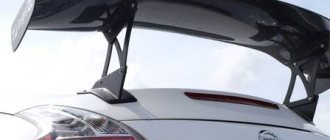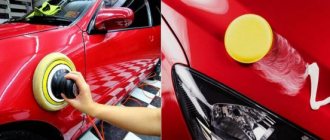Why you need to insulate your car for the winter
Many drivers are interested in why they need to insulate their car.
Experts believe that negative external factors, such as operation in any weather, increased load, poor-quality road surface, temperature changes, quickly render the car unusable. So, even a high-quality car begins to fail after 5 years of intensive use. This may be manifested by the passage of extraneous noise, sounds in the cabin along with the refreshing winter air. If you point a thermal imager at such a car, which measures the temperature of surfaces using a non-contact method, you can see something unpleasant. We are talking about heat leakage zones, and the vehicle itself will be like a sieve. This unpleasant situation leads to the fact that when the engine is turned off, warm air will instantly evaporate from the cabin. And this will only take a couple of minutes.
The need to insulate a car is as follows:
- Engine idle time is reduced. To maintain a comfortable temperature inside the car in winter, you need to periodically start the engine. But if the vehicle has not been insulated, warm air will not even linger in the cabin, which in turn will force the driver to constantly start the engine. This consumes a lot of fuel and can lead to damage to working engine parts. In the case of a winter-ready interior, the heat will be retained for as long as possible, which will reduce engine starting to a minimum;
- Sound insulation is improved. Extraneous noise in the car distracts the driver from the road, which can lead to accidents;
- vibration is reduced. This will be especially useful for old domestically produced cars, which often rattle and squeak during operation;
- damage to the paintwork is prevented, since ice on the hood only leads to negative consequences;
- engine starting is improved in winter. By insulating the engine, the driver will be able to start the car without any problems after a night's rest, while the vehicle is in the fresh air. This is due to the fact that the space under the hood retains the heat that was generated when the engine was running for as long as possible, preventing the oil from thickening.
What does this give?
Firstly, thermal insulation of a car engine is a chance to reduce the time it takes to warm up the main unit and thus save a significant amount of fuel.
Secondly, high-quality insulation eliminates the appearance of ice on the hood, which negatively affects the paintwork.
Thirdly, the arrangement of the interior allows you to increase the efficiency of the stove and retain heat in the cabin much longer (thanks to athermal tinting, this effect can be enhanced).
What are the advantages of car insulation?
Before you start, you need to understand what the advantages of such a process are. The main positive aspects include the following:
- after insulation, the engine will start many times faster;
- insulation contributes to additional sound insulation inside the car;
- if your car is left in the cold for a long time, then insulation allows you to retain warm air inside the car longer;
- since the engine will start faster, fuel consumption due to such procedures will be reduced;
- the heating system will work many times more efficiently.
Note!
By insulating the interior and individual elements of the car, you can avoid the formation of excess condensation. This will get rid of the build-up of ice crust.
What are the disadvantages of using an awning?
The main disadvantages are associated with the low quality of most covering materials for cars. Chinese manufacturers are not very concerned about the durability of your purchase, so the products are designed for 1-2 seasons of use. If the material begins to break, it is not safe to use it to cover the car. Broken areas become sharp and hard, they can damage the rubber seals and, in general, cause unpleasant nuances with the paintwork.
Also note that the awning does not breathe. By installing it on a wet and hot car, you are almost guaranteed to get a huge concentration of condensation underneath it. All this moisture will gradually begin to destroy the body, leading to the formation of rust. You only need to cover a cooled car, and in this case, ice often already forms on the glass and body. Accordingly, the meaning of using this accessory is lost. So its benefits are very individual and specific.
Radiator protection
One of the most common and simple ways to reduce heat loss is to partially block access to the cold air flow passing through the radiator grille. Both when parked and while driving, the engine quickly loses accumulated heat, so the idea of closing the radiator for the winter with a special shutter is very popular among motorists. However, you should understand its pros and cons.
The undoubted advantage of this method is its extreme cheapness: for some car owners, the most common cardboard for a radiator, assembled from scraps of old boxes, is already a sufficient measure (and serves as a source of jokes about the technological effectiveness of “Russian tuning”). And for motorists who are more picky about appearance, some companies produce special products made from various materials (ABS plastic, fabric and even leather).
It is worth covering the radiator from the flow of cold air only at temperatures from -10°C and below, otherwise there is a serious risk of overheating the engine. For the same reasons, you should not install a damper if the car spends most of its time in traffic jams. Cold air has a slight effect on the heat loss of a car sitting in traffic jams, but when the grille is closed, the circulation of air flows necessary for the car to effectively cool worsens. And even if the environmental conditions and vehicle operation justify the use of a damper, in no case should it be installed close to the radiator, pressed or attached to it - the air flow in any case must constantly move.
Thus, using a damper makes sense only when driving at high speed (for example, on a highway) and only at persistently low temperatures.
How effective is installing a damper on a radiator in winter is a controversial issue. Some car owners do not notice any difference, while others note positive changes, but admit that the effect is not as significant as they would like.
Pros of radiator protection:
- Does not require large expenditures (or is completely free when using scrap materials).
- It is extremely easy to install: the damper is installed between the bumper and the radiator or attached with clamps to the external decorative grille.
Disadvantages of radiator protection:
- Risk of overheating when sitting in traffic jams for a long time or at insufficiently low temperatures.
- The reduction in heat loss is usually very small.
Conclusion: installing a damper will not bring a significant effect if the car is not operated in extremely severe frosts (as, for example, in Yakutia, where the normal temperature for residents can reach -40-50°C).
Is an awning even necessary in winter - what does it give?
When a car owner takes into account all the recommendations presented above, he is not very happy with the price of a suitable awning. The question naturally arises: is it necessary to buy this product and spend money at all? There are no critical pros and cons of using an awning in winter. There are some nice positive aspects, but there are also disadvantages. Therefore, experts will not definitely recommend the purchase of this product. It's your personal choice.
There are several obvious advantages from using such a product:
? clearing snow becomes much easier - you can simply remove the awning, shake it out and put it in the trunk on a rubber mat, in 1-2 minutes the car will be ready to travel without complex procedures;
? the windows do not freeze up, which is also important, the car remains relatively dry and does not require constant use of a scraper in the morning, so the windows are less scratched;
? there is some protection against mechanical damage - a small branch falling from a tree will not damage the paintwork, but such protection is very conditional and not universal;
? the paint will not be subject to constant attack by bird droppings, this is especially important if you park the car under a tree or under a line of wires, where birds usually sit in the winter;
? An awning will also help in the fall when the leaves fall off, if your parking spot is under a tree, in which case you won’t have to clean the leaves out of the car every day.
Awnings save you from minor troubles, but they will not protect you from major problems. If it hails in the summer, for example, or the neighbor boys kick the ball at the car with all their might, the awning will not prevent dents and damage to the paintwork. Manufacturers often attribute to car awnings some magical properties of protection from all troubles, but in reality this is not the case. Yes, such a purchase will be useful for many vehicle owners who store their car outdoors. But you shouldn’t expect miracles from such an accessory.
Materials for car insulation
You can insulate your car interior for the winter using different materials. Most often, car enthusiasts use:
- Penofol. Considered an affordable material, it is polyethylene foam covered with aluminum foil on top. It is used due to its powerful sound insulation and cold-reflective features. Just one layer of material will help achieve an excellent result, despite its thickness of several millimeters. The material is flexible, lightweight, durable, and easy to install. Thermal insulation with penofol will also be appreciated in the summer, since the vehicle interior will remain cool longer, so there is the possibility of saving on fuel, since you will have to use the air conditioner less.
- Polyurethane foam. It is applied by spraying and helps fight not only the cold, but also extraneous noise. This material reliably closes all existing cracks, which allows cold air not to penetrate inside the car, protects the metal from corrosion and is absolutely safe for human health. Another advantage is the low thermal conductivity coefficient, even if it is applied in a thin layer. There is also a drawback. Thus, the material cannot be used for independent insulation. The fact is that this will require the use of special expensive equipment. Therefore, for such thermal insulation, the driver needs to spend at least 10 thousand rubles to pay for the services of specialists.
- Isolin. The material is characterized by high thermal insulation properties and is used to retain heat under the hood.
- Tiviplen-P. It has several layers: adhesive, outer and polyethylene foam. Despite the absence of foil in the composition, the material does a good job of retaining heat.
- Isoflex. Drivers love this material due to its low price, but it is more often used as a noise suppressant.
- Stizol and isotone. These materials provide a double effect and work well with their functions.
There are ready-made insulation materials for engines, called car blankets. In the ranking of the best you can find the following products:
- Torso - has a low cost (size 130x80 cm - about 500 rubles), there are various sizes for sale for cars, crossovers and SUVs, the warranty period is 3 years. Disadvantages include the lack of official certification;
- STP Heat Shield is available in different sizes; it is fastened using 8 clips, which are included in the package. This product is made of non-woven fabric, characterized by high resistance to oil, fuel, and other liquids, there is also a layer that absorbs noise and heat, as well as an adhesive layer that is not afraid of temperature changes. The cost of the set is about 1000 rubles;
- Skyway – there are 11 models with different sizes. The product has a good price-quality ratio; its service life reaches 2-3 years. Disadvantages include ease of damage, so installation requires maximum care. At the beginning of 2021, prices for products were 700-800 rubles;
- "Auto-MAT" - the brand produces a couple of types of products, namely A-1 and A-2. The models are non-flammable and characterized by resistance to acids, fuel, and oil. They differ from each other in the maximum temperature they can withstand. So, the first can handle temperatures up to +1000 °C, and the second – up to +1200 °C. There is also product A-3, used for thermal insulation of the battery. The price of such models is about 1000 rubles;
- “Avtoheat” is the most popular car blanket among drivers. The product can be used at temperatures down to -60 °C and does an excellent job of preventing icing of motor starting mechanisms. The model is fireproof, can withstand temperatures up to +1200 °C, and is not afraid of moisture, oil, fuel, acids and alkalis. The car blanket has a long service life and is used for cars and trucks. The price of the product depends on its size and reaches 1500-2500 rubles.
You can make such a car blanket at home. To do this, you will need fiberglass, internal filler or mullite-silica wool. Such materials are used to insulate wires carrying oil or gas.
Car engine blanket, is it worth using?
There are a lot of unjustified advantages of this miracle of an invention for insulating the engine, saving fuel, preserving the life of the battery, faster warming up of a cold engine.
If you take off your rose-colored glasses and think about it, the only plus
- this is heat preservation for a short time, provided that the engine warms up every two hours and does not have time to lose heat!
Warm air, as you should know, is lighter than cold air and rises. In turn, the car blanket prevents the loss of warm air and retains heat for a short time.
Does the car blanket keep you warm?
“After driving for several hours with a car blanket, the person left the car overnight without heating it up. The heat will stay in the engine compartment for a maximum of 2 hours. Naturally, by morning the engine will be cold. It’s another matter if the car is warmed up and the heat is maintained in the engine compartment until the morning, but that’s not all! Have you forgotten about the crankcase? It is located under the engine and is constantly blown by a cold wind, and as you know, it contains motor oil.”
When purchasing a car blanket, you should be more judicious about its advantages and not dream that it will help reduce fuel consumption and ensure 100% starting of a cold engine!
Let's sum it up
Many motorists in Russia have problems with winter car storage. It must be recognized that not all advice is suitable for every case. The same applies to the awning. In one situation, buying a covering material for a car will literally solve all the problems of the car owner, while in another it will lead to even faster failure of body materials and other elements. So you need to be very careful about all kinds of advice.
It is worth considering the characteristics of your climate. Some recommendations for winter car storage come from the southern regions, where people do not even have to change their tires to winter ones every year. You should consider the actual climate conditions and make sure that you are doing everything correctly and safely for the car itself. Otherwise, you will soon receive a number of unpleasant damage to the paintwork, glass and other parts of the car. Also, do not forget about general tips for preparing your machine for seasonal use. Following these recommendations will help you get rid of many troubles.
Source
Thermal case for battery
Thermal boxes for batteries have not become as widespread as engine insulation, but are still an available option for motorists who monitor the condition of the battery in their car. Acting on the same principle of heat conservation as car blankets, the battery cover allows you to maintain a positive battery temperature longer, making it easier to start the starter in severe frosts.
Being a close relative of a car blanket, a thermal box for a battery has the same advantages and disadvantages, in addition to protecting the battery from mechanical damage and contamination.
Advantages of a thermal battery cover:
- Low price.
- There are no difficulties in use: the thermal box is a bag made of special materials with thick walls in which the battery is stored.
- Makes it easier to start the starter after short stops (3–4 hours).
Disadvantages of a thermal battery cover:
- As with a car blanket, long-term parking of the car negates the insulation of the battery: over a long period of time, the accumulated heat will inevitably disappear.
As a result, it is worth noting that even without a thermal box, a correctly selected battery, even in severe frost, should not cause problems with starting the engine. Therefore, first of all, drivers whose batteries tend to “be capricious” at low temperatures, either due to their advanced age or due to improper use, should pay attention to thermal covers.
Preparing the car for winter
Here are some important points. Everyone notes that before wintering the car needs not only to be washed, but also updated. The body should be carefully checked for scratches and chips. When detected, they are painted over. It is advisable to wash the engine and cover up the number on it to prevent corrosion. The anti-corrosion layer must be renewed.
Another common problem: doors freezing at record low temperatures. To avoid this, door seals are generously coated with a special silicone compound.
An effective set of insulation measures or how to survive the Ice Age
Above we described 4 methods, talked about their effectiveness and dispelled erroneous opinions; by combining them, you are guaranteed 80% successful engine starting even at a temperature of -40 degrees. We will attribute the remaining 20% to the condition of your battery, engine oil and spark plugs.
This picture shows the places where the engine loses heat, from the radiator side, the crankcase and from above. By combining a 4 in 1 complex you prevent heat loss in all places.
The procedure for insulating a car interior with your own hands
Before you insulate the car interior, you need to realize that this procedure takes time. Therefore, if you are lazy, it is better to immediately send these questions to specialists who will do this work efficiently in a matter of days.
Not every car enthusiast knows how to insulate a car, but anyone can do it. Having prepared a knife, screwdriver, gloves, scissors, tape, sheet cardboard, felt-tip pen, sealant and rubber seals, you can proceed to the work process.
To achieve a good result, you need to adhere to the following order:
- Carry out preparatory work - select the material.
- Start insulating the interior. Usually the work is carried out in the garage, having provided good lighting in advance. Before you begin the procedure, you should wash the car, and you can only vacuum the inside of it and wipe off the dust. When the body and interior are completely dry, you can begin dismantling the seats, door trim and floor in the car. These actions must be careful so as not to break the fasteners. Then the insulation is cut out according to the intended dimensions of each interior element. It is glued onto work surfaces, then smoothed out and a hairdryer is used, which gives a fixing effect, making the fixation reliable and durable.
- The engine compartment is being insulated. The use of heat-resistant material prevents the formation of an ice crust that may appear on the hood itself. This material also helps speed up the warming up of the engine in the cold season. The material must be secured to the back of the hood, and then secured using special fasteners. Experts also recommend insulating the battery.
- The work is completed by installing the dismantled parts back; they need to be securely fixed. There is no need to rush here, as there is a risk of damage, especially for older cars.
Such thermal insulation of a vehicle takes about 3-6 hours.
By insulating the roof, floor, car doors, etc., the driver significantly reduced heat loss and increased comfort during trips. If you carry out the work yourself, the costs will be insignificant, and the effect will be very pleasing. Do not neglect this method, because most drivers have already seen its effectiveness.
Engine
The main thing to take care of is the condition of the piston. During prolonged inactivity, corrosion may form in the cylinders; in order to prevent this, you should pour 30-50 grams of engine oil into the cylinders and crank the engine. To prevent moisture from entering the power unit, cover the exhaust pipe and air filter with an oiled rag.
Tips and tricks
Taking into account the fact that it is possible to insulate the engine with a special “autoheat” blanket, many owners refuse to install the insulation on their own and prefer a ready-made solution. A car blanket is a special insulation material designed for trucks and cars. It is completely fireproof and can withstand temperatures in excess of 1000°C.
In addition, the material is environmentally friendly and has an affordable cost. It turns out that such a purchase saves the owner from the need to waste time on making insulation on his own, and at the same time, some of the problems with installation in the engine compartment are solved.
As a summary, we note that any method of insulation (both independently and with the help of ready-made solutions) will allow the engine to retain heat longer after stopping, reach operating temperatures faster after starting, etc.
The main thing is that engine protection in winter (insulation of the engine compartment) must be carried out comprehensively, also taking into account the individual characteristics of a particular vehicle and a number of conditions for storing and operating the vehicle.
How to store a car outdoors: general recommendations
Long-term parking of any vehicle is associated with negative consequences for some of its components and parts. Therefore, you should familiarize yourself with the basic recommendations in order to find out how to properly organize outdoor car storage with minimal consequences.
The first thing to consider before preparing to park is the period during which the car will remain stationary. If outdoor storage means its frequent use, when the break in use will not exceed one week, then there are several general tips that will help maintain the functionality of all its components and parts:
- Place the car on a slight hill so that puddles do not form under it. Firstly, high humidity accelerates corrosion. Secondly, frequent cycles of freezing and thawing of tires can lead to tire damage.
- Do not use the parking brake. Especially in the off-season, when the ambient temperature constantly changes from above zero to below zero. This can cause the pads to freeze or become corroded to the drums. It is recommended to turn the wheels towards the curb or other nearby obstacle and engage first gear.
- Make sure all electrical consumers are turned off. And when parking for more than one week, disconnect the terminals or remove the battery from the car.
- It is advisable to park the car in a place that is illuminated at night or in a relatively crowded and passable place. Ideally, it is best to store your car under your own windows. This will allow for daily monitoring of its condition, and in case of any incidents, a timely response.
Remember that storing a car outdoors involves certain risks. Any vehicle left for a long period of time without maintenance takes on the appropriate appearance. This may provoke an act of theft or vandalism against your car. Thieves are much more willing to work with cars that look like they have been abandoned. Therefore, it will not be superfluous to clean the car from dust and dirt from time to time or drive it to another place.
Suspension preparation
To unload the car's suspension, it should be placed on blocks and make sure that the body is level, not skewed, and the stands are stable. It is important to maintain such a height that there is no support on the wheels.
This will also help prevent tire compression; you will not need to monitor the pressure, which is recommended to be reduced, because it can change under the influence of temperature changes.
When “hanging” a car, it is important to remember that the shock absorber rods can rust if they are left unloaded for a long time. To avoid this, they should be lubricated or the fastenings should be unscrewed and then “assembled”.
Preparatory measures for storing a car in winter without a garage
If it is not possible to park your car in a covered parking lot or garage, you need to do some preparatory work before the onset of cold weather:
- Treat door locks and seals with silicone defroster. This procedure is especially important if the temperature crosses zero several times during the parking period. Silicone will prevent doors and locks from freezing and provide trouble-free access to the interior.
- Carefully inspect the condition of the anti-corrosion coating on the bottom, arches, doors and other places where treatment was carried out. If you find damage to the coating or pockets of corrosion, treat the body and restore anti-corrosion protection.
- Before storing the vehicle for long-term storage, fill the tank with fuel. This procedure is necessary for vehicles whose fuel tank is made of metal. Such a solution will eliminate corrosion processes. If the tank is plastic, then this is not necessary. For diesel cars, it is important to completely use up summer fuel and refuel with winter fuel. Especially if the parking is not for the whole winter or the possibility of putting the car into operation cannot be ruled out.
- Check the condition of the tires and inflate them periodically. To do this, we recommend stocking up on a good car compressor that will work flawlessly in winter. Deformation of tires due to low pressure can damage the cord structure or lead to the formation of cracks in the rubber.
- When parked for a long time, move the battery to a warm room. It is recommended to charge it before storage.
Remember: serviced batteries cannot be charged or stored in residential areas due to toxic emissions.
- Top up fluids to the maximum level. Be sure to fill the windshield washer reservoir with a high-quality anti-freeze agent. If you leave water in the windshield washer reservoir, you risk damaging the booster motor.
Compliance with the above rules will most likely allow you to remove the car from long-term parking and put it into operation without any problems.
You can purchase products to maintain the good condition of your car during long-term parking in winter in our online store TopDetal.ru. We sell a wide range of auto chemicals and various care accessories.
Sources
- https://DriverTip.ru/zhizn/uteplit-mashinu-na-zimu-svoimi-rukami.html
- https://AutoTopik.ru/obuchenie/713-teploizolyaciya-avtomobilya-svoimi-rukami.html
- https://mensdrive.ru/poleznye-stati/uteplit-avtomobil-na-zimu
- https://HyperAuto.ru/articles/poleznaya-informaciya/kak-uteplit-avtomobil/
- https://autozona54.ru/statyi/polezno-znat/sposoby-uteplit-avto-pered-kholodnoy.php
- https://KrutiMotor.ru/chem-nakryt-i-zashhitit-dvigatel-avtomobilya-ot-moroza-zimoj/
- https://topdetal.ru/stati/kak_khranit_avtomobil_zimoy_pod_otkrytym_nebom/
Tent storage
One of the options for storing a car outside in winter is to use a car awning. The awning does a fairly good job of protecting the car from snow, thereby saving time and preserving the paintwork. When choosing a car cover, choose the right fabric. It happens that, having covered a warm car, the cape freezes when the temperature drops. Removing a frozen awning can damage the varnish and paint. If you plan to leave your car for the whole winter, then a thick and insulated awning is better. In case of occasional use, choose a lighter cape so that it is easy to put on and take off.
Important! The fabric must be water-repellent, elastic, and resistant to temperature changes.











